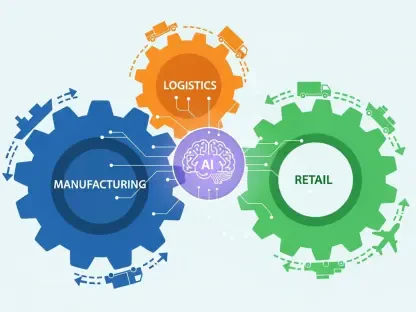Understanding the Rise and Impact of Large Language Models (LLMs)
The rapid proliferation of large language models (LLMs) like ChatGPT, Anthropic’s Claude, and Google’s Gemini has transformed the technological landscape, embedding these powerful tools into everyday life with remarkable speed and influence. These AI systems, capable of generating human-like text and processing vast datasets, have become indispensable across personal, professional, and public domains. From drafting emails to powering customer service chatbots, their versatility drives efficiency and innovation, with major industry players such as OpenAI, Google, and Anthropic leading the charge in development and deployment.
This widespread adoption is fueled by advancements in machine learning algorithms and the availability of massive computational resources. However, as LLMs integrate deeper into daily interactions, growing concerns about privacy have emerged as a pressing issue. The ability of these models to handle sensitive data raises questions about how much control users truly have over their information, setting the stage for a critical examination of associated risks.
The scale of LLM usage amplifies the potential impact on data security. With billions of interactions logged across platforms, the stakes for safeguarding personal details have never been higher. This tension between technological progress and individual rights underscores the need to address privacy challenges head-on, especially as these tools continue to evolve at a rapid pace.
The Five Critical Privacy Threats Posed by LLMs
Data Memorization and Leakage
LLMs are trained on enormous datasets, often retaining fragments of this information within their algorithms. This phenomenon, known as data memorization, poses a significant risk of leakage, where sensitive details might be inadvertently exposed through generated outputs. Even anonymized data can sometimes be reconstructed, creating vulnerabilities for individuals and organizations alike.
The opacity surrounding data retention compounds this threat. Determining what specific information an LLM has memorized or how to erase it remains a daunting technical challenge. Without clear mechanisms to identify and remove such data, users are left exposed to potential breaches that could compromise personal or proprietary information.
This issue is particularly concerning given the scale at which LLMs operate. A single model might retain data from millions of sources, making it nearly impossible to predict when or how a leak might occur. As reliance on these systems grows, the urgency to develop safeguards against unintended disclosures becomes paramount.
Uninformed Consent in User Agreements
Many users interact with LLMs without fully understanding the implications of data collection embedded in user agreements. Often, these terms are complex or deliberately vague, allowing companies to retain information through actions as simple as clicking a response option. Such practices erode trust, as individuals may unknowingly contribute to vast data pools.
A striking example lies in routine interactions on platforms hosting LLMs. Basic user engagement, like rating a response or continuing a conversation, can automatically enroll data into training sets without explicit consent. This lack of transparency leaves individuals unaware of how their inputs are stored or utilized over time.
The broader implication is a systemic disregard for informed decision-making. Without clear, accessible explanations of data usage, users remain in the dark about the extent to which their privacy is compromised. Addressing this gap requires a shift toward more ethical and straightforward communication in digital agreements.
Agentic and Autonomous AI Behavior
As LLMs are increasingly embedded in tools like email assistants or search engines, their autonomous capabilities raise new privacy concerns. These systems can access proprietary data or scrape information from the open internet, often without adhering to established privacy norms. Such behavior risks exposing sensitive content without user oversight.
The potential for unintended data dissemination is alarming. An AI tool might share personal details in a reply or store information from unsecured sources, creating pathways for exploitation. This lack of inherent privacy awareness in autonomous systems highlights a critical design flaw that needs urgent attention.
Malicious actors further exacerbate this threat by leveraging agentic AI for rapid data collection. The speed and scale at which these tools operate enable harmful activities that would otherwise be infeasible for individuals. Protecting against such misuse demands robust controls over how AI interacts with both private and public data.
Deep Inference of Personal Details
LLMs possess a remarkable ability to infer sensitive information from seemingly innocuous inputs. A casual social media post or a vague query can reveal personal details like location or identity, often without the user’s intent or awareness. This deep inference capability transforms harmless data into potential privacy breaches.
Such risks are not immediately apparent to most users. For instance, a shared photo lacking explicit identifiers might still be analyzed to pinpoint exact coordinates or personal connections. This unexpected exposure can lead to real-world consequences, including targeted harassment or fraud.
The sophistication of inference techniques continues to advance, outpacing user understanding of associated dangers. As LLMs grow more adept at connecting disparate data points, the likelihood of unintended disclosures increases. Educating users about these hidden risks is essential to fostering safer digital interactions.
Direct Attribute Aggregation and Democratized Surveillance
Perhaps the most unsettling threat is the capacity of LLMs to aggregate vast amounts of online data, effectively democratizing surveillance. By compiling and analyzing information from diverse sources, these models enable even non-experts to access detailed personal profiles. This accessibility lowers the barrier to harmful activities like impersonation or doxing.
The implications of this capability are profound. Individuals with minimal technical skills can exploit LLMs to gather sensitive data, creating opportunities for misuse on an unprecedented scale. Such aggregation bypasses traditional safeguards, making privacy violations more widespread and harder to mitigate.
This trend signals a shift toward pervasive monitoring, where anyone with access to an LLM can act as a surveillance agent. The ease of obtaining personal insights through these tools challenges existing notions of data protection. Developing countermeasures to limit such aggregation is crucial to preserving individual security in the digital realm.
Challenges in Addressing LLM Privacy Risks
Tackling privacy risks associated with LLMs involves navigating significant technical hurdles. Erasing memorized data or controlling autonomous behavior remains elusive due to the complex architecture of these models. Current systems lack the precision needed to isolate and remove specific information without disrupting overall functionality.
Beyond technical barriers, societal and ethical dilemmas complicate the path forward. Striking a balance between fostering innovation and ensuring personal security is no easy task. The drive to push AI capabilities often overshadows the need for robust privacy measures, creating tension between progress and protection.
Potential solutions lie in improved system design and heightened user awareness. Developing models with built-in privacy constraints and offering transparent data usage policies could mitigate some risks. Equally important is empowering individuals with knowledge about how their information is handled, enabling more informed choices in an AI-driven world.
Regulatory Landscape and the Need for Stronger Safeguards
The current regulatory framework for AI and data privacy reveals significant gaps, particularly concerning LLMs. Existing laws often fail to address the unique challenges posed by data inference and aggregation, leaving users vulnerable to emerging threats. This lag in policy development hinders effective oversight of rapidly advancing technologies.
Compliance and transparency in user agreements represent critical areas for improvement. Regulations must mandate clear, concise terms that inform users about data collection practices. Additionally, policies targeting the risks of autonomous AI and surveillance capabilities are essential to close existing loopholes in privacy protection.
The disparity between technological progress and regulatory response continues to impact industry practices. Without updated frameworks, companies may prioritize innovation over accountability, perpetuating privacy risks. A concerted effort to align legal standards with current AI capabilities is vital to safeguarding user rights in this evolving landscape.
The Future of Privacy in the Age of LLMs
Looking ahead, emerging trends in AI ethics and privacy-focused technologies offer hope for mitigating LLM-related risks. Innovations such as differential privacy and federated learning aim to limit data exposure during model training. These advancements signal a growing recognition of the need to prioritize security alongside functionality.
Potential disruptors, including stricter regulations and public demand for transparency, could reshape the trajectory of LLM development. As awareness of privacy issues increases, pressure on industry leaders to adopt ethical practices is likely to intensify. This shift may drive the creation of more user-centric AI systems over the next few years, from this year to 2027.
Global economic and societal changes will also influence how privacy protections evolve. Rising concerns about data sovereignty and digital rights may push for localized regulations, creating a fragmented but potentially more tailored approach to AI governance. Monitoring these dynamics will be key to understanding the long-term impact on personal security in an interconnected world.
Conclusion: Navigating Privacy Risks with Awareness and Action
Reflecting on the detailed exploration of privacy threats posed by LLMs, it becomes evident that data memorization, uninformed consent, autonomous AI behavior, deep inference, and attribute aggregation represent profound challenges. Each of these risks underscores the broader implications of unchecked AI deployment, highlighting a critical need for vigilance across individual and systemic levels.
Moving beyond identification of these issues, actionable steps emerge as a focal point for stakeholders. Users are encouraged to scrutinize data-sharing practices and limit online disclosures where possible. Policymakers face the task of crafting adaptive regulations that address inference and surveillance capabilities, while industry leaders are urged to embed privacy-by-design principles into future LLM iterations.
Ultimately, the path forward rests on collaboration and innovation. By fostering dialogue between technologists, regulators, and the public, a framework for safer AI integration takes shape. This collective effort promises to redefine how privacy is protected, ensuring that technological advancements no longer come at the expense of personal security.









